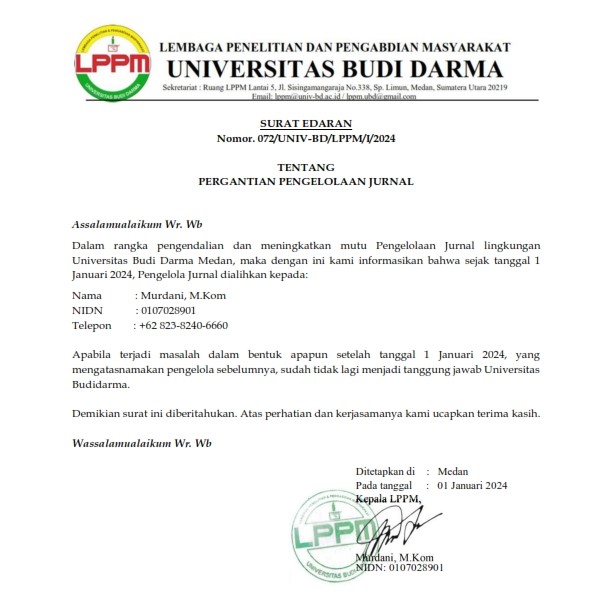Augmented Reality-Based Medicine Plants Learning Applications
DOI:
https://doi.org/10.30865/ijics.v5i2.3157Keywords:
Application, Interactive, Medicinal Plants, Augmented Reality, Prototype, C#Abstract
This study aims to design and build learning applications for medicinal plants based on Augmented reality so that they can be used as interactive learning media. The research methods used are qualitative and quantitative methods. Data collection methods used in this study are observation, interview, documentation, questionnaires and literature study and use the Prototype method as a software development method. This Augmented Reality-based medicinal plant learning application was built using the C# and Blender programming language to create 3-dimensional image designs. The result of developing this application is a learning media that can be run on a Smartphone by utilizing interactive Augmented Reality technology. When this application is opened, the main page will appear containing several menus, namely the play, guide, learning, and quite menus. The features contained in Augmented Reality-Based Medicinal Plant Learning, namely the 3D object scan feature, can find out information about plants with scanned images. This application can help people to get to know medicinal plants and their properties. And it can be an effective learning medium. Based on the results of the questionnaire, the application made by the author received a positive response from the respondents, in many category, such as the display, educational, satisfaction, interactive and musicReferences
M. Radji, “Peranan Bioteknologi Dan Mikroba Endofit Dalam Pengembangan Obat Herbal,†Maj. Ilmu Kefarmasian, vol. 2, no. 3, pp. 113–126, 2005, doi: 10.7454/psr.v2i3.3388.
L. Solihin, Bakti Utama, I. Pratiwi, and Novirina, Indeks Aktivitas Literasi Membaca 34 Provinsi. Jakarta: Pusat Penelitian Kebijakan Pendidikan dan Kebudayaan, Badan Penelitian dan Pengembangan, Kementerian Pendidikan dan Kebudayaan, 2019.
R. S. Pressman and L. N. Harnaningrum, Rekayasa Perangkat Lunak. Yogyakarta: Andi, 2007.
T. Sutabri, Sistem Informasi Manajemen. Jakarta, 2005.
P. R. A. Putra, “Penerapan Augmented Reality pada Permainan Ludo,†Naskah Publ. Sekol. Tinggi Manaj. Inform. dan Komput. AMIKOM Yogyakarta, 2012.
M. Fernando, “Membuat Aplikasi Augmented Reality Menggunakan Vuforia SDK dan Unity,†Skripsi Progr. Stud. Tek. Inform. Univ. Klabat Manad., 2013.
S. Blackman, Beginning 3D Game Development with Unity. New York: Apress, 2011.
L. Flavell, Beginning Blender: Open Source 3D Modelling, Animation, and Game Design. New York: Apress, 2011.
E. Darmawan and L. Risal, Pemrograman Beorientasi Objek C#. Bandung: Informatika, 2014.
Yurindra, Software Engineering. Yogyakarta: Deepublish, 2017.
R. S. Pressman, Rekayasa Perangkat Lunak: Pendekatan Praktisi (Buku 1), 1st ed. Yogyakarta: Andi, 2010.
K. Artawan, P. N. Crisnapati, I. G. M. Darmawiguna, and I. M. G. Sunarya, “Pengembangan Aplikasi Pengenalan Bunga Kebun Raya Eka Karya Bali Berbasis Markerless Augmented,†Kumpul. Artik. Mhs. Pendidik. Tek. Inform., vol. 4, no. 3, pp. 10–16, 2015.
D. Agustina, A. Mardianti, and R. F. F. Aziz, “Perancangan Aplikasi Augmented Reality Pengenalan Jenis - Jenis Tanaman Herbal Berbasis Android,†J. IKRA-ITH Inform., vol. 4, no. 3, pp. 89–94, 2020.
Muntahanah, R. Toyib, and M. Ansyori, “Penerapan Teknologi Augmented Reality Pada Katalog Rumah Berbasis Android (Studi Kasus PT. Jashando Han Saputra),†J. Pseudocode, vol. IV, no. 1, pp. 81–89, 2017.
Z. H. Majeed and H. A. Ali, “A review of augmented reality in educational applications,†Int. J. Adv. Technol. Eng. Explor., vol. 7, no. 62, pp. 20–27, 2020.
S. Rossa and M. Shalahuddin, Rekayasa Perangkat Lunak (Terstruktur dan Berorientasi Objek). Bandung: Informatika, 2016.







